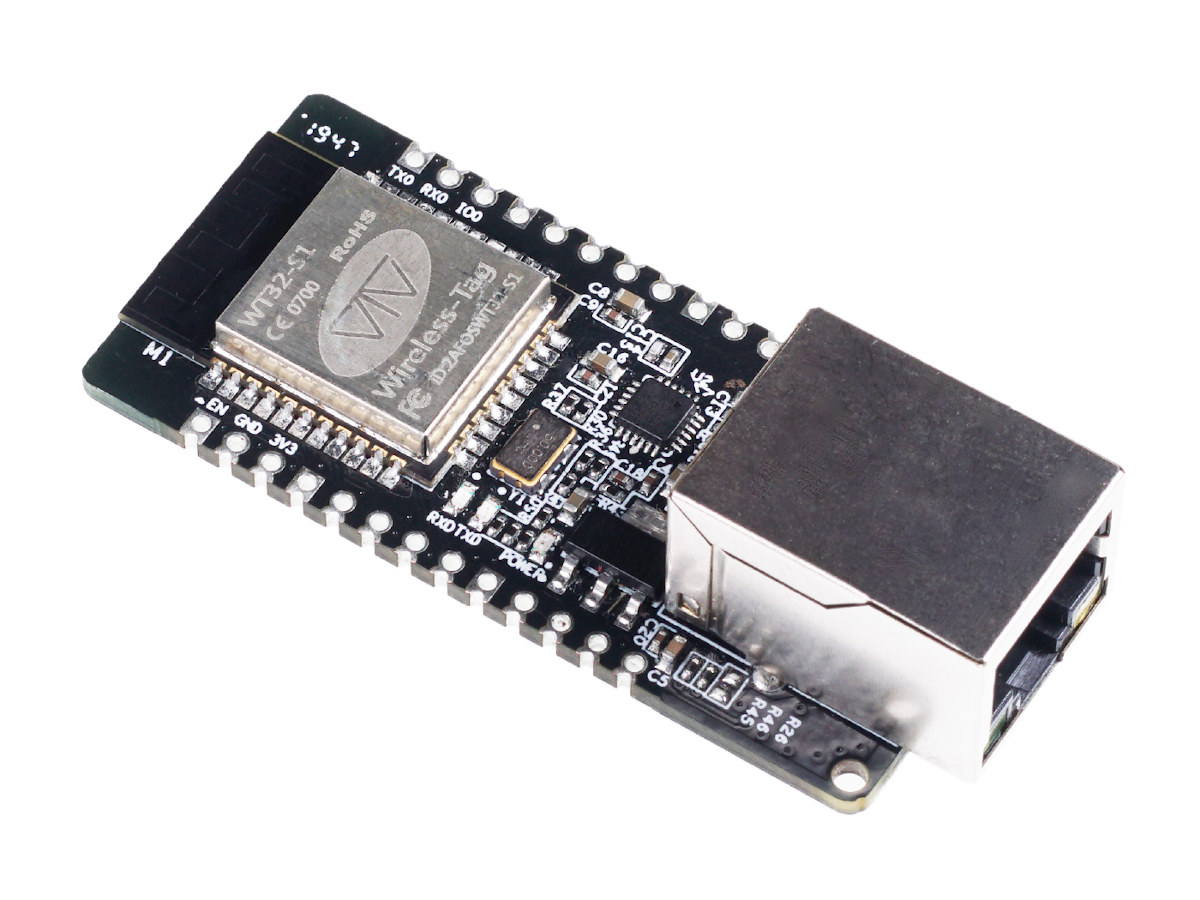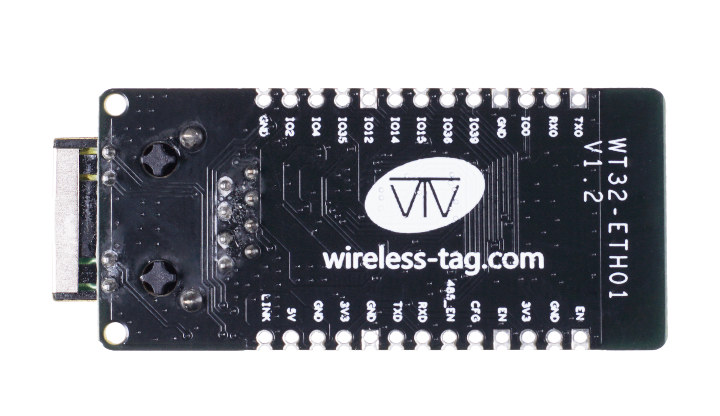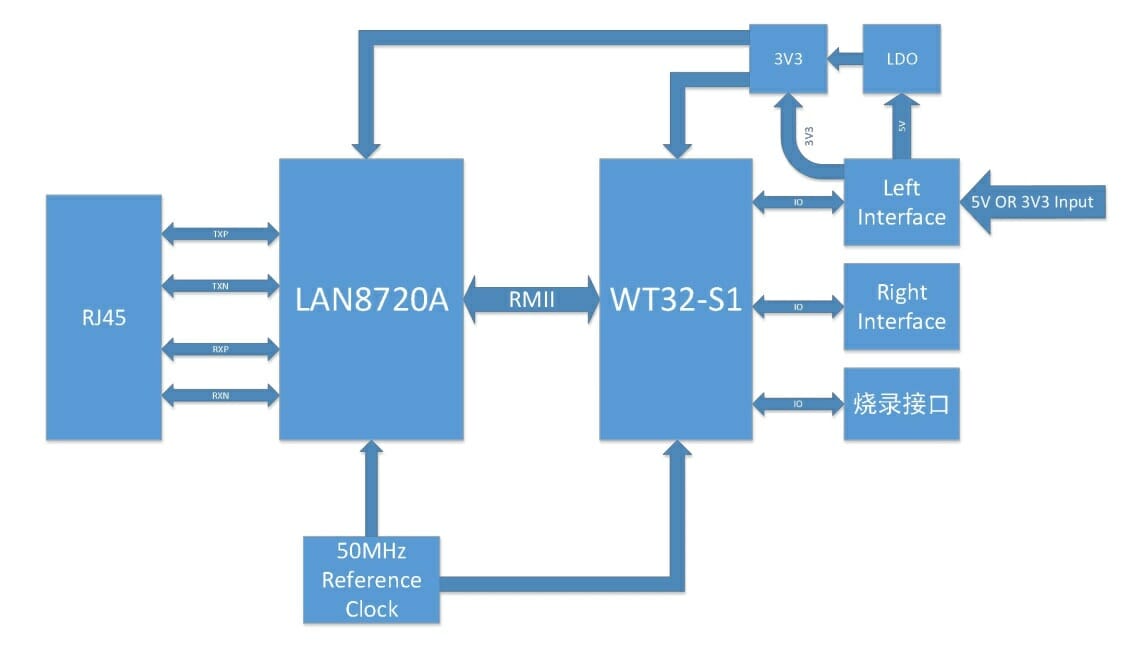Espressif Systems ESP32 processor supports WiFi, Bluetooth, and Ethernet connectivity. There are only a few boards coming with an Ethernet RJ45 jack out of the box including esp32MX-E ESP32 board, TTGO T-Internet-POE, and Olimex ESP32-Gateway board among others.
Those boards are fine, but they sell for $16 and up, so if you’d like a cheaper and tinier ESP32 board with Ethernet, Wireless Tag WT32-ETH01 may be an option for projects not requiring PoE support.

- Wireless Module – Wireless Tag WT32-S1 based on ESP32 dual-core WiSoC with 4MB flash, on-board antenna
- Connectivity
- 10/100M Ethernet via LAN8720A transceiver
- 2.4 GHz 802.11b/g/n WiFi 4 up to 150 Mbps
- Bluetooth 4.2 BR/EDR and LE
- Expansion – 2x 13 through holes and castellated holes with GPIOs, I2C, SPI, 2x UART, EN, LINK, 5V, 3.3V, and GND signals
- Power Supply – 3.3V or 5.5V via headers, minimum 500 mA; typical operating current: 80 mA
- Dimensions – 6 x 2.5 cm
- Temperature Range – -40°C to +85°C
- Certifications – FCC/CE/RoHS

It looks to be shipping with firmware that’s controlled via AT commands, but as an ESP32 board, you may be able to run other firmware like Arduino or MicroPython with some work. If you’d like to integrate WT32-ETH01 ESP32 Ethernet board into a home automation project, you’ll be glad to know the board has very recently been added to Tasmota firmware.


Jean-Luc started CNX Software in 2010 as a part-time endeavor, before quitting his job as a software engineering manager, and starting to write daily news, and reviews full time later in 2011.
Support CNX Software! Donate via cryptocurrencies, become a Patron on Patreon, or purchase goods on Amazon or Aliexpress




